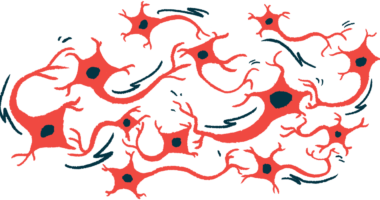3-tiered newborn screening works well on large scale: Study in Brazil
Method involves analyzing enzymes, biomarkers, and then genetics

Incorporating a three-tiered approach to newborn screening (NBS) makes it highly feasible for large-scale programs, according to a recent study conducted in Brazil.
This comprehensive method — involving enzyme analysis, biomarker examination, and genetic testing — can ensure timely intervention and optimal care for newborns.
Using this approach, researchers in Brazil identified two cases of Fabry disease among five other lysosomal storage disorders.
The study, “Pilot study of newborn screening for six lysosomal diseases in Brazil,” was published in the journal Molecular Genetics and Metabolism.
Early diagnosis enables timely treatment before irreversible damage occurs
Lysosomal storage disorders (LSDs), such as Fabry, are rare genetic disorders characterized by the build-up of molecules that lead to damage in several tissues and organs.
Fabry disease is caused by a mutation in the GLA gene which has the instructions for the production of an enzyme called alpha-galactosidase A (alpha-Gal A). This enzyme is responsible for breaking down fatty molecules into building blocks that cells can use. Its deficiency causes a continuous build-up of certain fatty molecules — particularly Gb3 and lyso-Gb3 — in small blood vessels and body tissues, leading to damage and a wide range of symptoms.
Early diagnosis is key so that patients can receive timely treatment before irreversible damage occurs.
Newborn screening is considered the best option to detect these disorders. The process usually involves collecting a blood drop from a heel prick on infants immediately after birth. Several countries have adopted newborn screening or are running pilot studies for testing LSDs.
Newborn screening for Fabry and five other lysosomal storage disorders
Here, researchers describe the results of a first pilot study in Brazil that conducted a newborn screen for Fabry along with five other LSDs using PerkinElmer’s NeoLSD MSMS Kit. The kit uses a technology called tandem mass spectrometry that measures the activity of alpha-Gal A, among other enzymes, in dried blood spots.
Mass spectrometry can identify and quantify proteins based on their mass-to-charge ratio. The advantage of mass spectrometry is its high sensitivity and accuracy.
Samples testing positive for any disorder were then evaluated for specific biomarkers and sent for subsequent diagnostic genetic testing using next-generation sequencing.
The other five LSDs included Gaucher disease, Pompe disease, mucopolysaccharidosis type I, Krabbe disease, and acid sphingomyelinase deficiency.
In total, dried blood spot (DBS) samples from 20,066 newborns were analyzed. If the results showed enzymatic activity below the cutoff value, the test was repeated using the same DBS. If the result was maintained, then a second DBS was collected and tested for additional disease biomarkers using mass spectrometry and, in parallel, was submitted to genetic testing.
Of the 20,066 newborns analyzed, 99 of them (0.49%) had an enzyme activity level below the established cutoff. A second analysis in the same samples confirmed the low enzyme activity in 15 newborns (0.07%). In the case of Fabry, the cutoff value was set as GLA activity below 1.5 nanomoles per hour per milliliter, which was observed in three male newborns.
Biomarker analysis confirmed elevated levels of lyso-Gb3 in two newborns
Further biomarker analysis confirmed elevated levels of lyso-Gb3 in two of these newborns, while the third had levels within the normal range.
Subsequent genetic testing showed two distinct mutations in the GLA gene in two of these newborns, one of which has been linked with late-onset Fabry disease.
Overall, these findings support the use of mass spectrometry as a first test to identify newborns likely positive for mutations linked to LSDs. The outcomes of the test can then be confirmed in subsequent analysis using additional disease biomarkers and genetic testing.
“The possibility to run all tests in a DBS sample makes this protocol applicable to large-scale NBS programs,” the researchers concluded.








